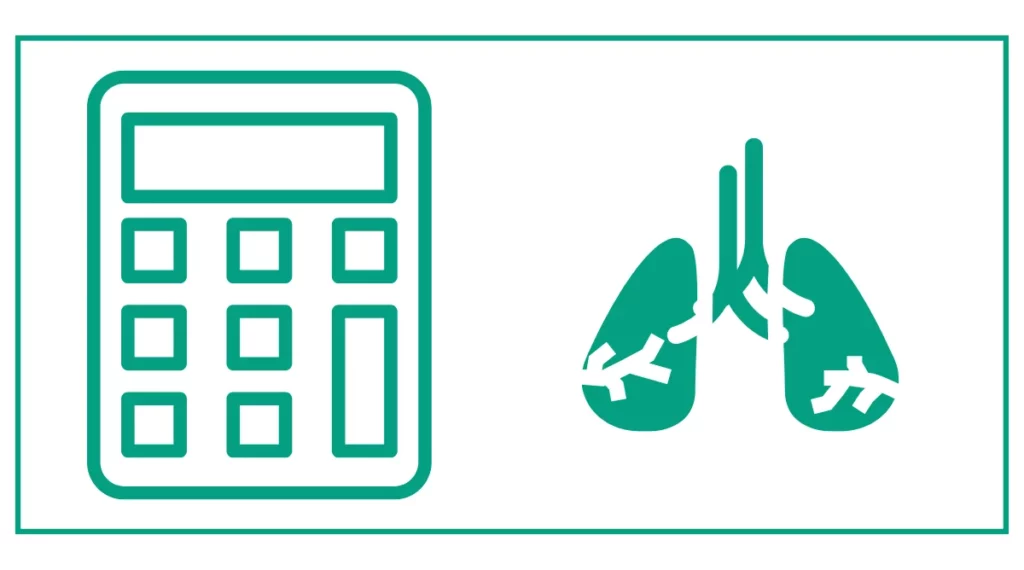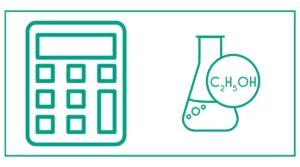BUN Creatinine Ratio Calculator
You can use this BUN creatinine ratio calculator to determine how much blood urea nitrogen you have compared to how much creatinine you have.
Enter the BUN value and Serum Creatinine values to calculate the ratio.
The blood urea nitrogen (BUN) test is a good way to determine if your kidneys or diet are giving you trouble.
BUN/creatinine ratio >20 = Prerenal cause
BUN/creatinine ratio <10 = Intrinsic renal cause

You might want to determine your carb cycling or fat burning.
What is the BUN Creatinine Ratio?
The BUN creatinine ratio is a comparison between the levels of blood urea nitrogen and creatinine in the blood. Both BUN and creatinine are metabolites filtered by the kidneys, and their levels can indicate how well the kidneys are functioning.
Blood Urea Nitrogen (BUN)
Blood urea nitrogen is a waste product of protein metabolism formed in the liver. The kidneys filter BUN from the blood, and it is eventually excreted in urine. BUN levels can be affected by various factors, including diet, hydration status, and kidney function.
Creatinine
Creatinine is a product of creatinine phosphate breakdown in muscles. Like BUN, creatinine is filtered by the kidneys and excreted in urine. Creatinine levels are generally more stable than BUN levels and are less affected by factors outside of kidney function.
How to Calculate the BUN Creatinine Ratio
To calculate the BUN creatinine ratio, you simply divide the BUN value by the serum creatinine value. The formula for calculating the BUN creatinine ratio is:
BUN Creatinine Ratio = BUN (mg/dL) / Serum Creatinine (mg/dL)
For example, if a patient's BUN level is 18 mg/dL and their serum creatinine level is 1.0 mg/dL, the BUN creatinine ratio would be:
18 mg/dL / 1.0 mg/dL = 18
It's important to note that the normal range for the BUN creatinine ratio is typically between 10 and 20. Values outside this range may indicate various kidney or health issues.
Using the BUN Creatinine Ratio Calculator
The BUN creatinine ratio calculator is a user-friendly tool that simplifies the process of determining this important health metric. Here's how to use it:
- Input the BUN value in the appropriate field.
- Select the unit of measurement for BUN (mg/dL or mmol/L).
- Input the serum creatinine value in the designated field.
- Select the unit of measurement for creatinine (mg/dL or μmol/L).
- Click the "Calculate Ratio" button.
The calculator will then display the BUN creatinine ratio and provide a brief interpretation of the result.
Interpreting BUN Creatinine Ratio Results
Understanding the results of the BUN creatinine ratio calculator is crucial for assessing kidney function and identifying potential health issues. Here's a general guide to interpreting the results:
Normal Range
A BUN creatinine ratio between 10 and 20 is generally considered normal. This range suggests that the kidneys are functioning properly and efficiently filtering waste products from the blood.
High BUN Creatinine Ratio
If the BUN creatinine ratio is higher than 20, it may suggest a prerenal cause of acute renal failure. This means that the issue is likely occurring before blood reaches the kidneys. Some potential causes of a high BUN creatinine ratio include:
- Dehydration
- Congestive heart failure
- Gastrointestinal bleeding
- Excessive protein intake
Low BUN Creatinine Ratio
A BUN creatinine ratio lower than 10 may indicate an intrinsic renal cause of kidney dysfunction. This suggests that the problem is within the kidneys themselves. Possible causes of a low BUN creatinine ratio include:
- Acute tubular necrosis
- Glomerulonephritis
- Interstitial nephritis
- Certain medications that affect kidney function
Factors Affecting BUN and Creatinine Levels
Several factors can influence BUN and creatinine levels, which in turn affect the BUN creatinine ratio. Understanding these factors is essential for accurate interpretation of the results:
Factors Affecting BUN Levels
- Protein intake: A high-protein diet can increase BUN levels.
- Hydration status: Dehydration can lead to elevated BUN levels.
- Liver function: The liver produces urea, so liver disease can affect BUN levels.
- Medications: Certain drugs, such as corticosteroids, can increase BUN levels.
Factors Affecting Creatinine Levels
- Muscle mass: Individuals with higher muscle mass typically have higher creatinine levels.
- Age: Creatinine levels may decrease with age due to reduced muscle mass.
- Gender: Men generally have higher creatinine levels than women due to greater muscle mass.
- Medications: Some drugs can affect creatinine levels or interfere with its measurement.
Limitations of the BUN Creatinine Ratio
While the BUN creatinine ratio calculator is a useful tool, it's important to recognize its limitations:
- It provides a snapshot: The ratio represents a single point in time and may not reflect long-term kidney function.
- It can be affected by non-renal factors: As mentioned earlier, various factors can influence BUN and creatinine levels independently of kidney function.
- It may not detect early kidney disease: The ratio may remain normal in the early stages of chronic kidney disease (CKD).
- It doesn't provide a complete picture: Other tests, such as glomerular filtration rate (GFR), are often needed for a comprehensive assessment of kidney function.
Other Important Kidney Function Tests
While the BUN creatinine ratio is valuable, healthcare professionals often use it in conjunction with other tests to get a more complete picture of kidney health:
Glomerular Filtration Rate (GFR)
The GFR is considered the best overall measure of kidney function. It estimates how much blood passes through the glomeruli (tiny filters in the kidneys) each minute.
Urinalysis
This test examines the urine for signs of kidney disease, such as protein or blood in the urine.
Imaging Tests
Ultrasounds, CT scans, or MRIs may be used to visualize the structure of the kidneys and detect any abnormalities.
When to Seek Medical Advice
If you're concerned about your kidney function or have risk factors for kidney disease, it's important to consult with a healthcare professional. They may recommend testing your BUN creatinine ratio and other kidney function markers if you experience symptoms such as:
- Frequent urination
- Swelling in the legs, ankles, or feet
- Fatigue
- Nausea
- Loss of appetite
- Difficulty concentrating
- High blood pressure
Remember, early detection and treatment of kidney problems can help prevent more serious complications.
Conclusion
The BUN creatinine ratio calculator is a valuable tool for assessing kidney function and identifying potential causes of acute renal failure. By providing a quick and easy way to calculate this important ratio, it helps healthcare professionals make informed decisions about patient care.
However, it's crucial to remember that the BUN creatinine ratio is just one piece of the puzzle when it comes to evaluating kidney health. It should be used in conjunction with other tests and clinical assessments for a comprehensive understanding of kidney function.
If you have concerns about your kidney health or are at risk for kidney disease, don't hesitate to speak with your healthcare provider. They can help you understand your BUN creatinine ratio results and determine if further testing or treatment is necessary.
By staying informed and proactive about your kidney health, you can take important steps towards maintaining overall well-being and preventing serious kidney-related complications.
References
- Uchino, S., Bellomo, R., & Goldsmith, D. (2012). The meaning of the blood urea nitrogen/creatinine ratio in acute kidney injury. Clinical kidney journal, 5(2), 187-191.
- Matsue, Y., van der Meer, P., Damman, K., Metra, M., O'Connor, C. M., Ponikowski, P., … & Voors, A. A. (2017). Blood urea nitrogen-to-creatinine ratio in the general population and patients with acute heart failure. Heart, 103(6), 407-413.
- Schrock, J. W., Glasenapp, M., & Drogell, K. (2012). Elevated blood urea nitrogen/creatinine ratio is associated with poor outcomes in patients with ischemic stroke. Clinical Neurology and Neurosurgery, 114(7), 881-884.





